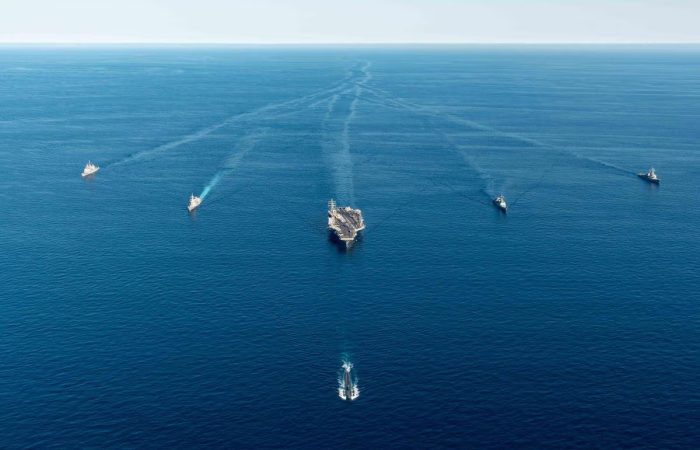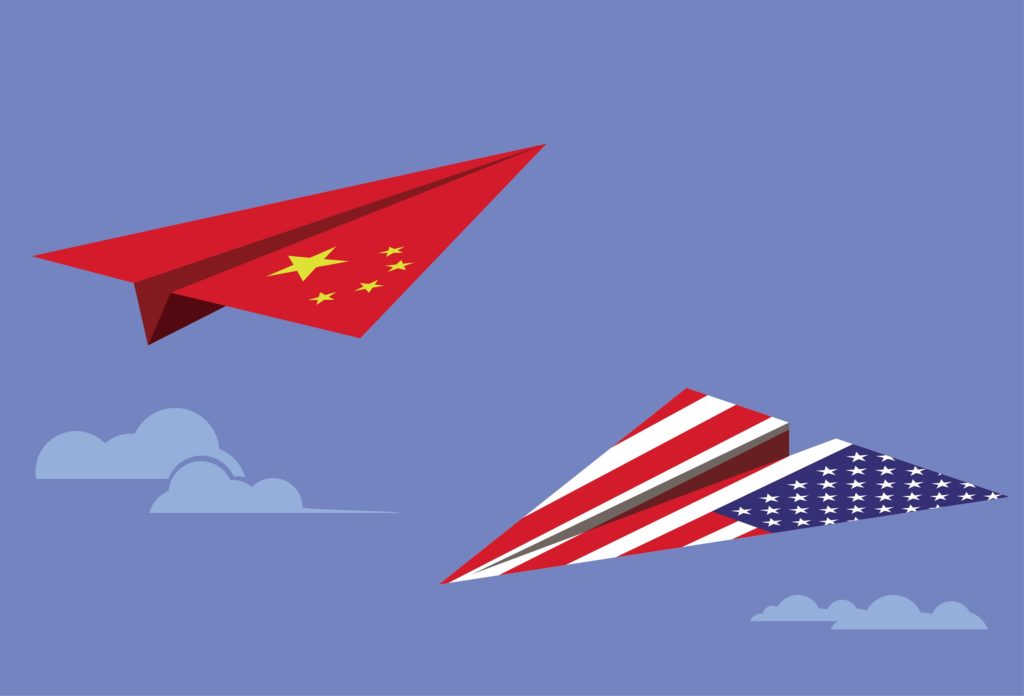On June 8, 2023, Dr. Ely Ratner, Assistant Secretary of Defense (ASD) for Indo-Pacific Security Affairs in the Biden administration, sat down with Lisa Curtis of the Center for a New American Security (CNAS) for a discussion on ‘Building a Networked Security Architecture in the Indo-Pacific.’ On the heels of a tour throughout Asia alongside Secretary of Defense Lloyd Austin, ASD Ratner returned stateside to this event with palpable optimism about the geopolitical situation in the Indo-Pacific region. “This is a moment of unprecedented alignment in our alliances and partnerships in the region,” he said, echoing Secretary Austin’s remarks given at the 20th Shangri-La Dialogue of a “shared vision” across the Pacific.
Throughout the event, Ratner shared with CNAS’ Lisa Curtis three dominant themes which permeated the meetings that the Pentagon team held throughout the Indo-Pacific. The first recurring theme in these discussions was the region’s embrace of U.S. efforts to “build a more distributed, mobile, resilient force posture throughout the [Indo-Pacific]” by diversifying alliances and increasing U.S. access to military bases. Curtis honed in on this issue, particularly on the increasingly deep U.S.-Philippines security relationship. She highlighted the recent expansion of the Enhanced Defense Cooperation Agreement which will magnify the rotational presence of U.S. forces in the Philippines by extending access to four littoral military bases close to sensitive theaters like the Taiwan Strait and the South China Sea. Ratner suggested that Beijing’s recent bout of “counter-normative behavior” in the maritime domain pushed former Philippine president Duterte—at the tail end of his tenure—and the incumbent, Marcos Jr., to recognize the U.S. once more as a stabilizing force in the region rather than a presence to be viewed with suspicion. He expressed hopes that this welcoming of an increased U.S. presence will lead to new forms of interoperability between Washington and Manila. Namely, to enhance the Philippines’ asymmetric capabilities to directly counter the threat from China in the South China Sea. April’s Balikatan joint exercise—which featured over 17,000 American, Filipino, and Australian troops and a simulation of an anti-ship cruise missile strike—is a good bellwether of the types of asymmetric capability enhancement and interoperability that will come of the Philippines’ deepening ingratiation into U.S.-led regional security formations. Ratner also suggested that the Philippines-U.S. alliance is “rising to be on par” with its more traditional alliances in the region with Japan, South Korea, and Australia.
The second theme which came up frequently in Ratner’s discussion with partner states concerned capability enhancement: both efforts to support allies and partners in developing their capacities to defend themselves and mutual efforts to integrate defense industries. Here, Curtis highlighted the rapid change of pace and posture in Japan’s most recent national security strategy, released in December 2022, which includes an intention to double defense spending, develop counter-strike capabilities, and increase its defense exports. Ratner responded that the level of strategic alignment that the U.S. is experiencing with Japan right now is “historic” and highlighted the 2+2 talks held this past January as an important turning point. Since then, the U.S. and Japan have been in lockstep in facilitating Tokyo’s force posture to defend its southwestern island chain against threats from China and counter North Korea through improved ballistic missile detection and defense capabilities. Ratner also pointed out that Japan’s focus on defense exports has the potential to plug gaps and improve the capabilities of other U.S. partners in the region like the Philippines and South Korea.
Thirdly, the Pentagon’s Asia tour featured a huge emphasis on “networking [U.S.] alliances and partnerships” through multilateral and mini-lateral engagements rather than just bilateral ones. Ratner remarked that Secretary Austin met on a bilateral basis less frequently than through multilateral arrangements like U.S.-South Korea-Japan, U.S.-Japan-Australia, the Quad, and, as a notable first for the tour, U.S.-Australia-Philippines. Japan in particular is involved in the vast majority of U.S. regional security arrangements, effectively dispersing its defense capabilities throughout the U.S.-led network. To enable this multilateral information and capability sharing, Ratner explained during the Q&A session that the Biden administration is committed to developing systems that safely enable critical technology sharing with U.S. partners. This includes reforming International Traffic in Arms Regulations and other export controls as was done with nuclear-powered submarines for the Australia-UK-U.S. (AUKUS) security pact.
After reviewing Ratner’s three identified themes in recent U.S.-Asian military-to-military discussions, Curtis brought up Washington’s strategic divergence with India regarding the Russian invasion of Ukraine. She highlighted a May 1st article by Ashley Tellis of the Carnegie Endowment for International Peace which suggested that Washington should not count on New Delhi for military support in any military flare-up in the Taiwan Strait. Ratner assured the audience that the Indo-Pacific and the “China challenge” remain the focus of the administration despite the acute threat from Russia, offering the most recent National Defense Strategy and the aforementioned engagements as evidence. Regarding the strategic discrepancies with New Delhi, Ratner pointed to the enduring shared vision of the U.S. and India for a ‘Free and Open Indo-Pacific’ and that continued investment from the U.S. in India’s defense capabilities will ultimately lead to more operational cooperation with the U.S. and allies—particularly in the maritime domain. He suggested that June’s state visit by Prime Minister Modi to Washington could be an opportunity to harmonize the two states’ interests and hinted that some “historic, exciting announcements…in terms of particular projects on defense industrial cooperation” can be expected as a deliverable starting point.
The event concluded with Ratner lamenting the deterioration of U.S.-China relations, offering that he is “tearing his hair out” over Beijing’s rejection of repeated U.S. appeals to restart basic military-to-military dialogues. The Assistant Secretary also sounded the alarm bell on China and North Korea’s ongoing nuclear modernization program but suggested that ongoing dialogues with South Korea and Japan are providing a strong and sharpening deterrent. While faced with an increasingly challenging security environment, Ratner believes that the U.S. regional presence is more forward-deployed, capable, and multilateral than ever before and that “the forces of stability are outpacing the forces of aggression and coercion” in the Indo-Pacific.
Related Terms
You May be Interested In
- Amanda (Yue) Jin
- March 14, 2024
- China, U.S.
- Economics & Trade, Global Politics, Security, US Domestic Politics
- Dahlia Deng
- February 15, 2024
- Asia-Pacific, China, East Asia, Eurasia, Europe, Global, U.S.
- Global Politics




